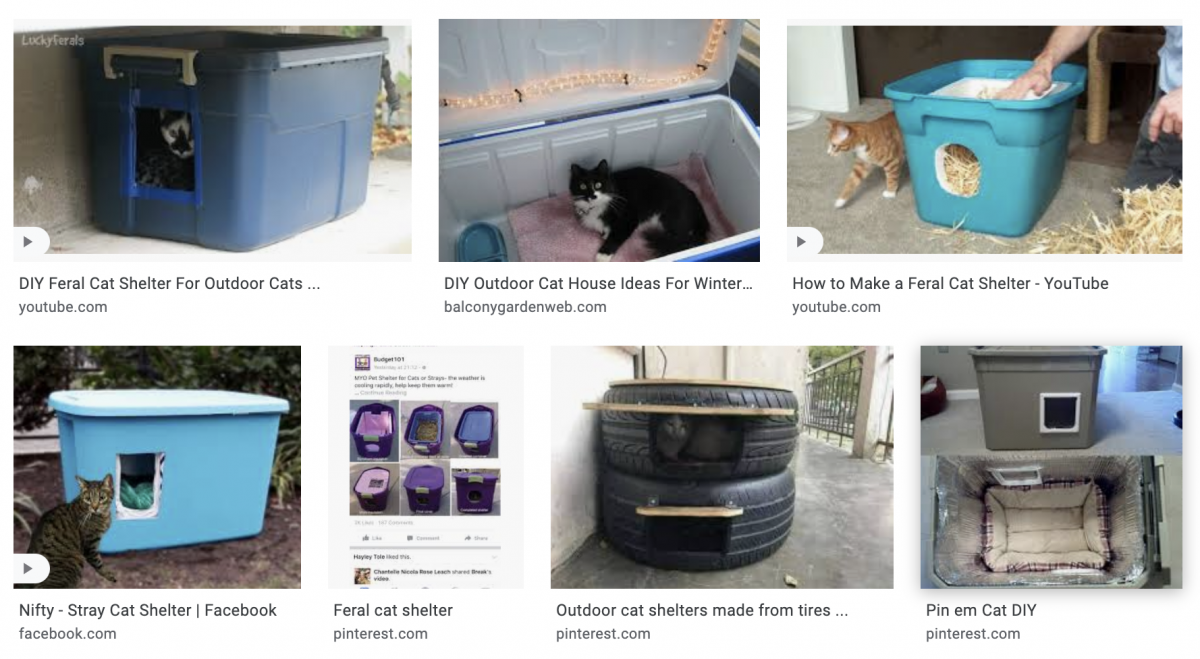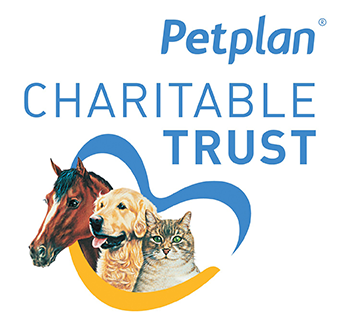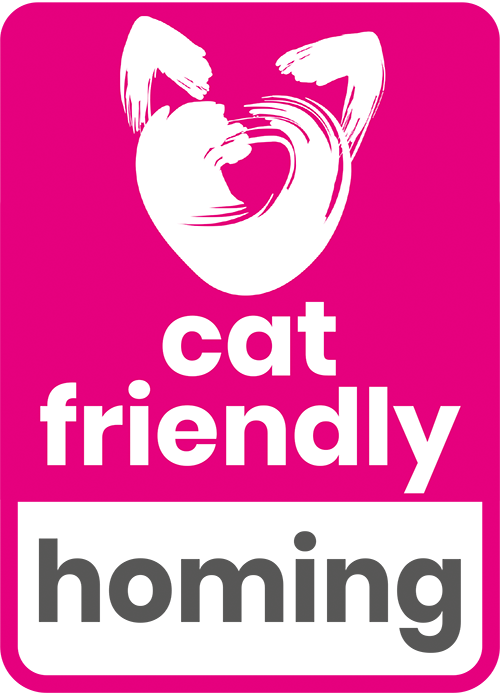 Outcome: Alternative lifestyles
Outcome: Alternative lifestyles
The ‘inbetweeners’
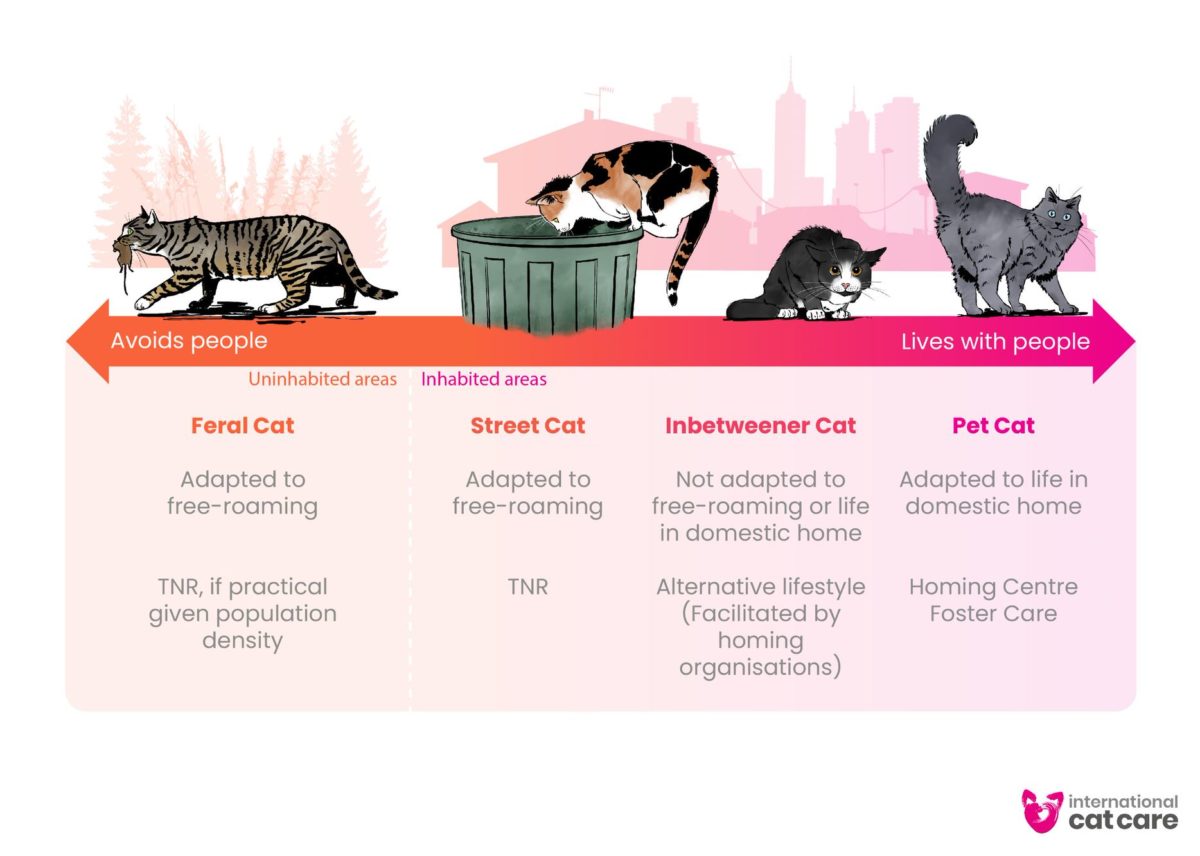 Inbetweeners are cats that are not usually identified until they come to the attention of a homing centre with the view to finding them new homes. Inbetweeners are cats that:
Inbetweeners are cats that are not usually identified until they come to the attention of a homing centre with the view to finding them new homes. Inbetweeners are cats that:
- Have previously been treated as pet cats but are often unsuccessful as pets, because they are uncomfortable to varying degrees with the close proximity of people. This could be as a result of a lack of effective early socialisation with people, no early socialisation at all or a temperament trait that means they can be fearful or anxious of, or frustrated with, people
- Need some support and so are not able to live successfully as street cats
- May only feel comfortable if they are completely in control of the amount and type of contact they have with their owners and thus owners need to understand how to live with them
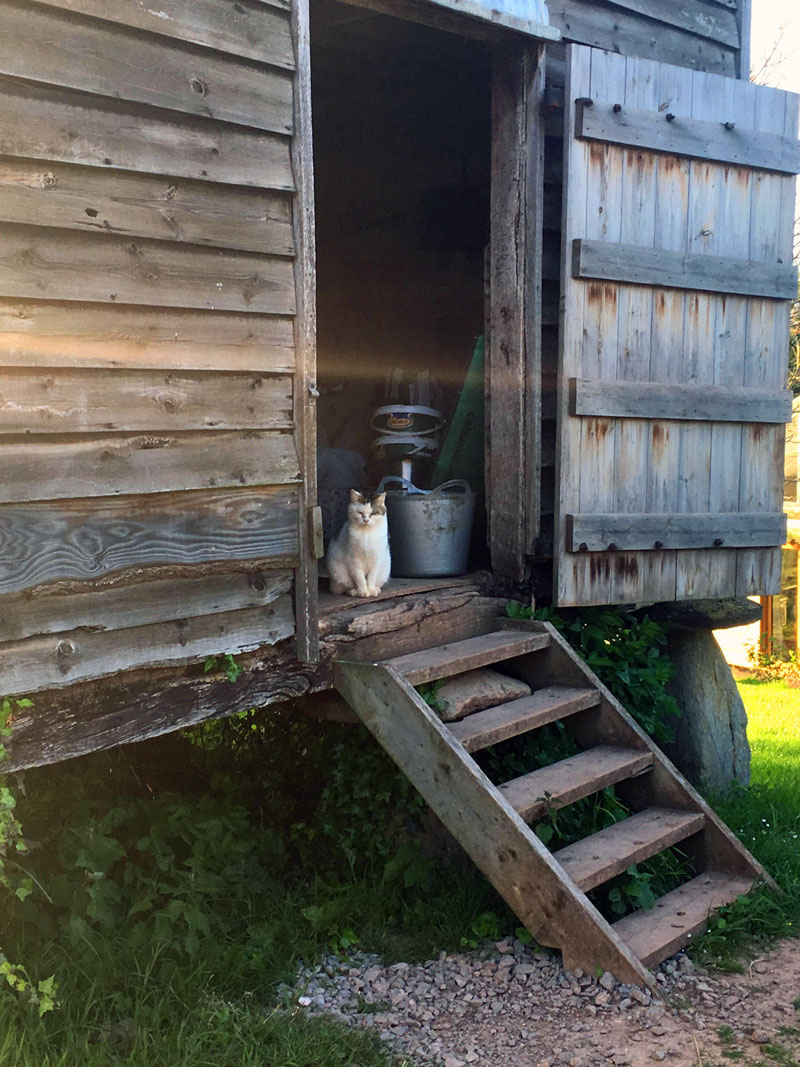
This cat is living an alternative lifestyle (source Battersea Dogs & Cats Home)
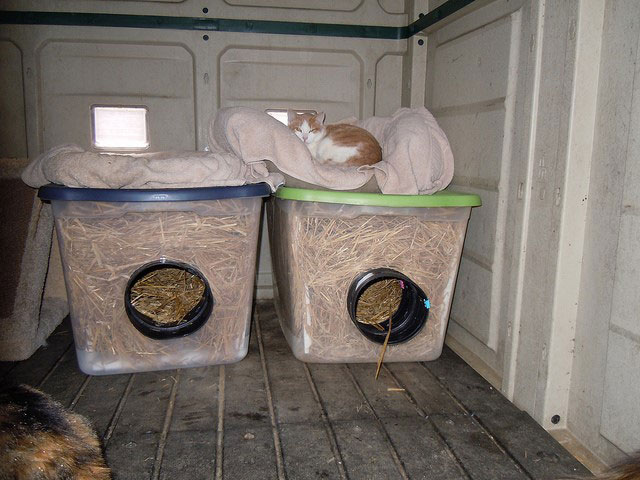
These cats have their own shelters within an outbuilding (Source Ian MacFarlaine)
Inbetweeners need your careful consideration as a conventional pet home will not suit their particular needs.
- Many inbetweeners would do well living a free-roaming lifestyle where they have food and shelter and a person to care for them from a distance. This can be done in many different environments, for example, hotels, stables, farms and even in spacious gardens.
- Other inbetweeners need to be near people, even living in their homes, but don’t want the constant contact or focus that is typical of a more normal owner/cat relationship (see Smokey’s story below)
| Have a look at what Battersea Dogs and Cats Home are doing. They refer to their alternative lifestyle homing as their “Outlet Cat Programme” and include not just inbetweeners but other unsocialised cats too.
Battersea’s outlet cats are lower maintenance than domestic pet cats and generally only require food, water, warm shelter, a sufficient area to hunt and go to the toilet in, and someone to keep an eye on them. They usually prefer to come and go completely on their own terms without the pressure to interact with people. Battersea outlet cats are microchipped, neutered, treated for fleas and/or worms, and given an initial set of vaccinations. Unless the cat becomes unwell, outlet cats should not require any further health or veterinary treatments. How does Battersea decide if a cat is suited to living in an outlet? Decisions as to whether or not to place cats in outlets are taken on a case-by-case basis in consultation with a Battersea vet. There are certain circumstances that mean a cat is unlikely to be suitable for an outlet. The following are some examples of cats unlikely to be suited to an outlet environment:
What can carers expect from a Battersea outlet cat? Unlike a typical family pet, an outlet cat is likely to keep its distance and stay away from people. It may also be more likely to hunt than a typical pet cat and so may need some space, but it is important that the outlet cat is fed daily to encourage it to remain in the area. Evy Mayes, Feline Welfare Advisor, Battersea Dog & Cats Home  Luna, a Battersea outlet cat, in her hut 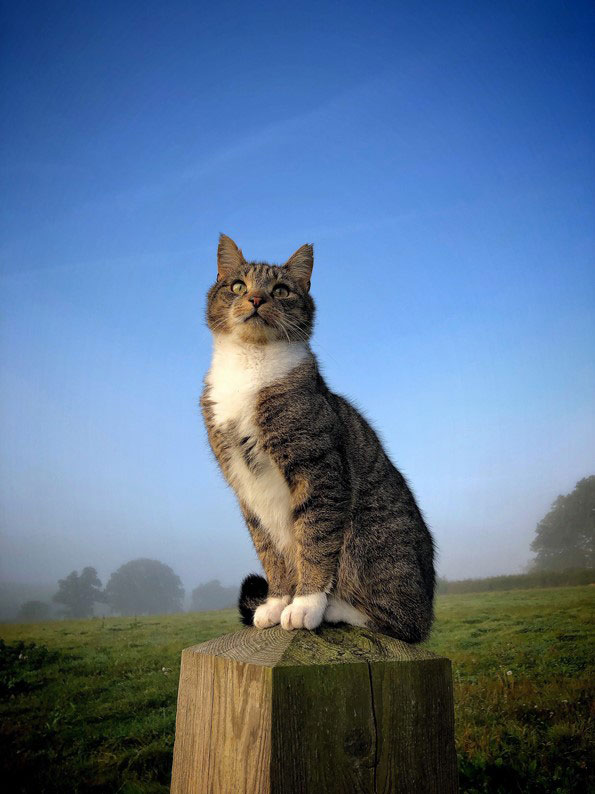 Coco enjoying her new life as a Battersea outlet cat  Flurry and Foxy’s shelter for when they first arrived in their new outlet home |
Zabka’s story
Zabka was a pedigree Bengal cat purchased from the pet department of a famous department store in Knightsbridge, London. She was twelve weeks old when she arrived in her new home and was a very nervous kitten, so much so that she lived on top of a wardrobe and only came down at night to eat and use her litter tray.
Her owner, who lived with her husband in a penthouse apartment in London, called in a behaviourist after a couple of months as she wasn’t making any progress with Zabka and just didn’t know how to get her to interact. The behaviourist established that Zabka had not benefited from positive early experiences with people and that having them around was very difficult for her. The behaviourist advised that Zabka was not suitable for a pet home. However, the owners were not prepared to give her up, and so they followed advice from the behaviourist about how they could make her more comfortable in her current environment. They soon learned to leave Zabka alone and let her do what felt comfortable for her. Fortunately, Zabka formed a bond with one of the two other cats in the household and for the next three years, she lived in the same apartment, avoiding her owners at every opportunity.
After three years the behaviourist was contacted by Zabka’s owners with the news that they were expecting their first child and they had decided that Zabka needed to go somewhere else where her specific needs could be met. They sent a picture of Zabka looking fairly relaxed on their bed with the white cat that had become her companion.
The behaviourist contacted Battersea Dogs and Cats Home to discuss taking Zabka in and the kind of alternative home that she required. The owners were not able to keep her any longer so Zabka had to come into the centre. Zabka was extremely frightened and the staff took every care not to interfere with her or disturb her in her pen apart from when they had to feed her and clean her litter tray.
They worked hard to find her an environment that would suit her needs: to be cared for by people, but from a distance. They soon found a woman who had a small farm with an old caravan on the site, with a cat flap, that would make the perfect den for Zabka where she could sleep, take shelter and have her food.
After just 14 days at Battersea, Zabka was taken to the farm and settled in well. She formed positive relationships with two other cats in the vicinity and the person caring for her had no expectations and put no pressure on her – she was free to roam. A recent update from her carer reported: ‘Zabka is still with us, she operates mainly in the evenings which is the most likely time we see her. She can disappear for weeks or we can see her nearly every night, it all depends on how she is feeling! She has become a very independent cat’.
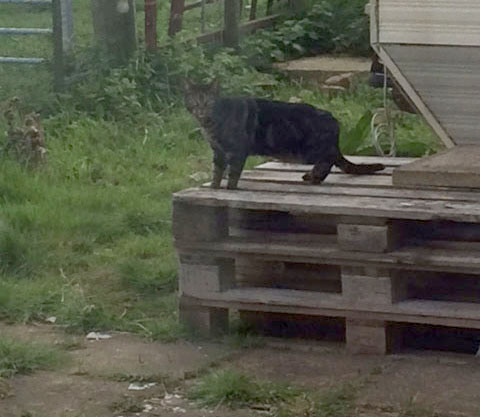
Zabka enjoying her freedom in her new home. Zabka was the first ‘outlet cat’ rehomed by Battersea Dogs and Cats Home. Since then they have rehomed 160 more outlet cats between 2016-2018
The inbetweeners that can live closer to home
Some inbetweeners can still be pets but need very particular kinds of owners and an unrestricted lifestyle. The very special owner for this kind of inbetweener is happy to give the cat everything it needs without expecting any love or gratitude in return! Have a look at Smokey’s story below.
Smokey’s story
To say Smokey’s early life was hard would be an understatement.
Smokey was purchased by a young woman with three small children; she felt it would be good for them to have something to care for. Sadly, things didn’t work out as she had expected and her children, all of whom had learning difficulties, were inadvertently causing Smokey considerable levels of distress. Their mother would often find them in the bathroom ‘bathing’ the kitten and their excitable games eventually resulted in Smokey becoming injured. The woman was concerned for her kitten’s safety so made the decision to keep her away from the children by confining her in a wire cage. She felt that this would guarantee no harm could come to the little cat but still allow her to spend time in the living room with the family. This continued for eighteen months until one day a relative visited and was alarmed to see Smokey’s incarceration. She immediately contacted her local homing centre and told them the story. The staff at this particular centre had been learning about CFH, so listened with concern but without judgement to ensure that the details were not censored and they obtained as much information as possible. They arranged to visit the woman to see how they might help. After a tearful discussion, Smokey’s owner agreed to give the cat up for adoption to find a home that would enable her to run freely again.
Smokey appeared very scared of people and proved extremely challenging to care for in the homing centre. She hid and if anyone came near, she launched an attack.
This video shows how scared Smokey was when she first arrived in the homing centre:
The staff believed, based on Smokey’s history, that she had come from a pet cat mother and may have been well socialised with people in the breeder’s home. They knew that Smokey needed a different environment for them to fully understand the long-term implications of her experiences in her last home. They decided to put her into the foster care of someone with experience, skill and the necessary training, to give Smokey the kind of hands-off care she needed. They had to be sure that Smokey was capable of adjusting to be a happy and safe family pet. If this wasn’t going to be the case, foster care would at least establish more accurately what could be done for her.
The foster carer, Kim, wanted to give Smokey the time to dictate her own pace of adjusting to her new life without confinement, and hopefully to rebuild her trust in people. Kim made no attempts to interact with Smokey, allowing her to explore one room and then, in her own time, the rest of the house. Smokey ambushed Kim and her husband frequently, grabbing at their feet and ankles, often with fearsome facial expressions and accompanying hisses and growls. With great compassion and understanding, they carried on with the day to day business of living.
Smokey was full of explosive excitement one minute and acute fear the next. It soon became clear that she was dependent on people but just didn’t feel safe around them. She wasn’t suitable to live outdoors with a distant carer, so what would become of her?
Time went on and Kim, together with the homing centre staff, searched for that special kind of permanent owner who would give Smokey the space and understanding she needed. Nobody was forthcoming at the time and the team were crestfallen. Smokey continued to thrive in her new temporary home and her life transformed when she discovered the delights of Kim’s beautiful garden, even playing with some fox cubs (see video) on several occasions as if it was just another wonderful adventure for her. The day that Kim saw Smokey rolling around in the grass and sniffing the air with a look of blissful contentment on her face, she decided that Smokey didn’t need to look any further. She was home. Smokey continues to flourish to this day, becoming more and more trusting and loving towards Kim and her husband and even staying in the same room when strangers come to visit. However she still needs the same hands-off approach and, if she does decide to become a lap cat, it will be on her own terms and in her own time!
Smokey playing with a young fox:

Smokey relaxing at home
Selling the benefits of the inbetweener
It can be quite difficult to sell the benefits of caring for a cat like Smokey, but sometimes cats like this can give enormous satisfaction to their owners by thriving in a place where they feel totally in control of where they go and what they do. Research does show that owners that approach their cat more often for interaction actually get less contact with their cats (Wedl M, Bauer Bm Gracey D, et al (2011) Factors affecting the temporal patterns of dyadic behaviours and interactions between domestic cats and their owners. Behavioural Processes 86, 58-67). Allowing the cat to initiate contact results in more interaction, as the cat is able to make the decision and be in control. Inbetweeners like Smokey, in a no-pressure atmosphere such as this, often blossom.
Setting up an inbetweener project in your area
There are still going to be the inbetweeners, unlike Smokey, who don’t want to live quite so close to people. The general public needs to learn about the special kind of cat called the inbetweener so you may find that setting up a specific project will get the local community interested and rallying round to help and support. This could potentially be game-changing for the welfare of those cats that currently don’t fit into conventional thinking, and a new community of forward-thinking cat carers may well form as a result of this information.
Firstly, you need to make sure that all cats you feel would be eligible for free-roaming (able to go wherever they want to go but with a shelter and food provided by a specific carer) are in good health, neutered, vaccinated, ear-tipped and microchipped.
You can make your Inbetweener Project open to communities as well as individuals if you wish, although one or two persons would need to be made the cat’s (or cats’) official carers. Any person or community taking on a cat in this way would automatically become part of your Inbetweener Community where they can share ideas about shelters, for example, and how to re-cycle items to form homes for their free-roaming cats.
Ideas for shelters can be found on search engines:
Wherever possible you can provide them with information, support and in some cases, if resources allow, veterinary care for their inbetweeners. Potential carers could, for example, sign up to the following principles:
- I will respect my inbetweener and will not force my attention on it or try to change it
- I will happily interact if the cat chooses to come to me
- I will provide my inbetweener with food and water every day and make provisions for doing so when I am not there
- I will maintain my inbetweener’s shelter to ensure it remains water-tight and comfortable, not too hot in the summer or too cold in the winter
- I will monitor my inbetweener for any signs of illness or injury and report to you (or whoever appropriate)
- I will allow your representative to call or visit to help when required
What about the feral and street cats that slip through the net and end up in the homing centre?
From time to time feral or street cats are incorrectly assessed as pets or find themselves in a homing centre for other reasons. It soon becomes apparent that these cats are likely to have come from some or many generations of non-pet cats, they had previously lived independently of people and had no experience of interacting with them.
The options for these cats are to return them to where they came from, after neutering, vaccination (if funds allow) and ear tipping, or relocate them to a place where there is plentiful shelter and food. They may be relocated to a farm, smallholding or barn, for example, where someone takes the responsibility to feed them and provide them with shelter and monitor them from a distance for any signs of illness or injury.



